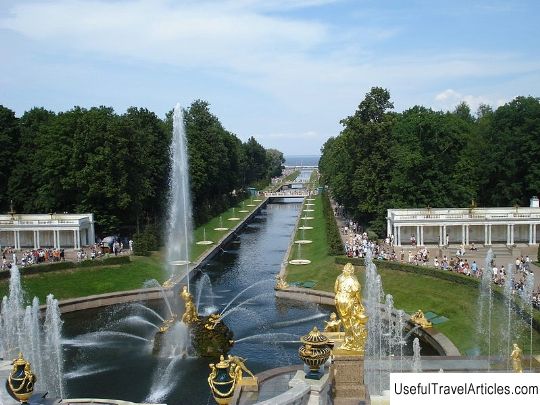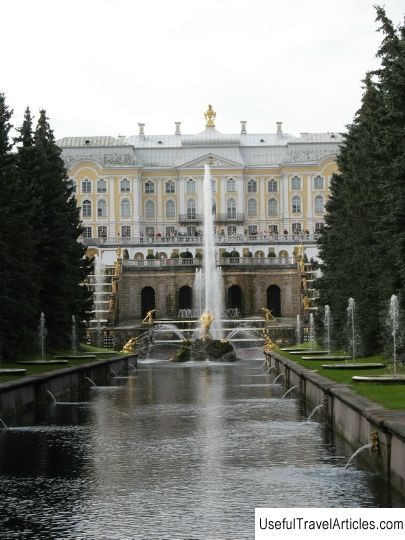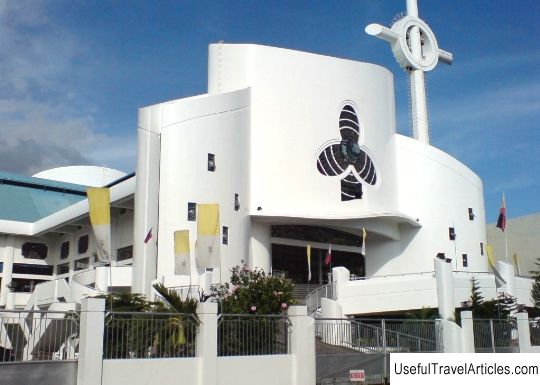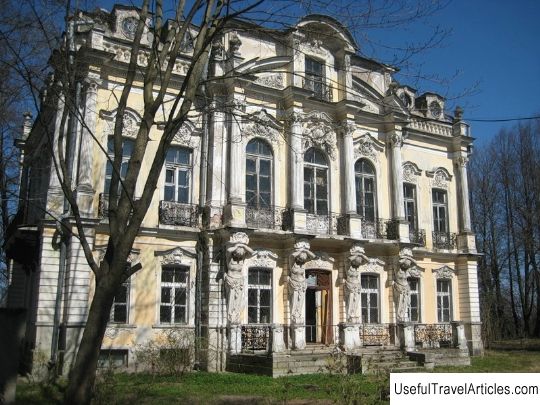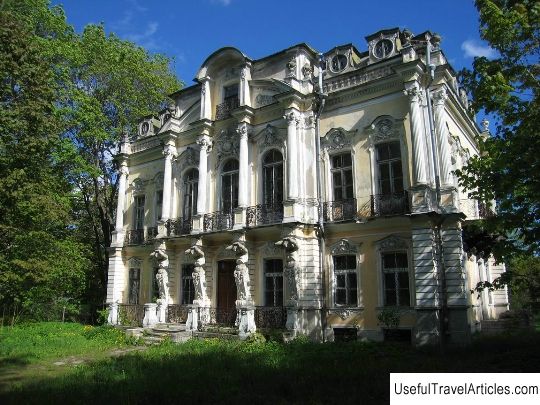Marly Palace description and photos - Russia - St. Petersburg: Peterhof
Rating: 7,9/10 (575 votes) 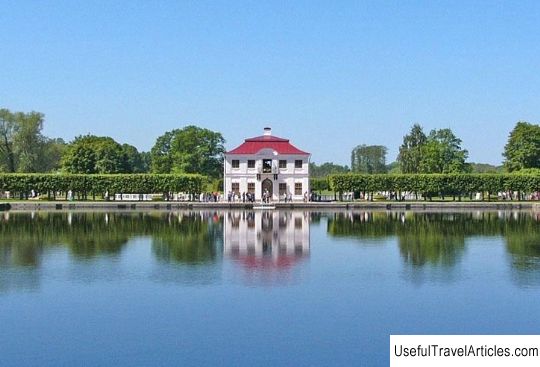
Marly Palace description and photos - Russia - St. Petersburg: Peterhof. Detailed information about the attraction. Description, photos and a map showing the nearest significant objects. Photo and descriptionThe Marly Palace is located in the west of the Lower Park of the Peterhof Palace and Park Complex. The palace got its name in honor of Tsar Peter I's visit to the French royal residence near Paris at Marly-le-Roi in 1717 (the residence of the French kings was destroyed during the French Revolution). But the Marly Palace in Peterhof and the surrounding gardens and ponds did not at all repeat Marly-le-Roi; only the general composition and the idea of combining the economic and decorative purposes of the park were borrowed from it. The Marly Palace was built according to the project of Johann Braunstein at the same time as the laying of the Marlin ponds in 1720-1723. Initially, the palace was planned to be one-story. But during construction, at the direction of Peter I, some changes were made to the project, and a second floor appeared in the palace, which, in turn, made the proportions of the building more balanced and made its appearance complete (in the volume of the palace, it is a well-adjusted cube). The stone craftsmen A. Kardassier and J. Neupokoev, as well as the sculptor Nikola Pino, took part in the construction and decoration of the building. In comparison with other buildings of the ensemble of the Peterhof park, the Marly Palace is distinguished by its particular modesty, which is characteristic of others small palaces that were created for Peter. Its facades are decorated with laconic details in the form of rusticated blades with Doric capitals, window bindings with small square deviations, forged balconies. The Marly Palace comprises twelve rooms, excluding the staircases and corridors. The palace does not have the usual ceremonial hall, which is very unusual. The role of the ceremonial hall, according to Peter's plan, was to be played by the vestibule ("Front Hall"). Initially, the palace was used to accommodate noble persons who were visiting Peterhof; but in the middle of the 18th century. he began to bear a memorial character. For a long time, the clothes of Peter I were kept here (later, most of the wardrobe and other personal belongings of the tsar were transferred to the Hermitage). After that, in the entire history of Marley, its purpose has not changed. In 1899, the Marley Palace was completely dismantled to put it on a new foundation. The reason for such events was the cracks that went along the walls of the building. The restoration of the palace was supervised by engineer A. Semyonov; the original details of the Marley fittings have been fully preserved and the palace has been recreated with superb precision. During the Great Patriotic War, the building of the palace was badly damaged as a result of being hit by time mines. In 1955, the facades were restored, and since 1982, Marly began to function as a museum again. The current exposition of the palace contains unique exhibits: books from Peter's library, his naval overcoat, caftan, table with a "slate" board, which was made by the king himself, his dishes. It also houses a collection of paintings collected by the emperor, which forms the basis of the pictorial exhibition. This includes paintings by little-known Flemish, Dutch and Italian masters of the 17th and 18th centuries: A. Storka, A. Silo, A. Celesti, P. Belotti and others. Some of the pieces of furniture in the palace are quite authentic, while the rest are meticulously selected in accordance with the descriptions in the surviving documents. In the western part of the Lower Park, there is the Marlin Garden, which is divided by the Big Pond into the Bacchus Garden (south of the pond) and the Venus Garden (north of the pond, closer to the sea). The garden was laid at the same time as the construction of the palace began, and was of practical importance. In the garden of Bacchus, they tried to grow grapes (unsuccessfully), in the garden of Venus, fruits were grown for meals. From the Baltic side, the Garden of Venus protects from the winds an earthen rampart, which was poured during the laying of ponds. To the east of Marly there is Marlinsky, and from the west - Sektoralnye ponds. They had both a decorative value and a purely practical one: here they bred and kept fish, brought to the tsar's table, brought from different parts of Russia. In our time, the tradition of raising fish here has been renewed, and amateur fishermen can practice their skills here and spend time with their favorite pastime on the local ponds. The garden was laid out according to the strict canons of a regular park. Thanks to the excellent combination of colorful splendor and practical use, gauze in the 18th century. became a kind of example for the arrangement of Russian estates.               We also recommend reading Plaza de Espana description and photos - Spain: Madrid Topic: Marly Palace description and photos - Russia - St. Petersburg: Peterhof. |
